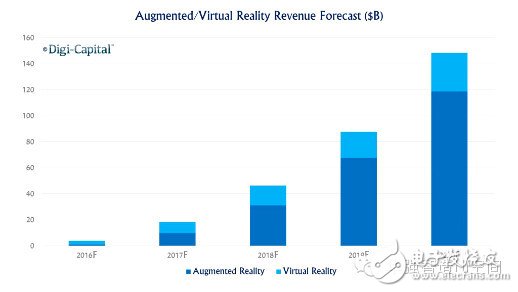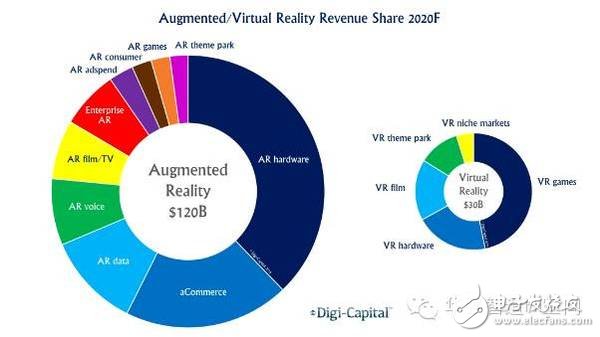Virtual Reality (VR) and Augmented Reality (AR) will subvert the traditional model and become a new generation of human-computer interaction platform.
A good user experience is the core appeal of human-computer interaction, and traditional devices such as keyboards, mice, and displays cannot meet the increasing requirements of data dimensions. Therefore, VR and AR have such an "excellent immersive experience, allowing computers to adapt to people." Technology will become a new interface for human-computer interaction.
Among them, VR is committed to interacting naturally with objects in the virtual world, so as to obtain the same feelings as the real world through visual, auditory, tactile, etc.; AR based on VR, the virtual world and the real world to interact, the real Environment and virtual objects are superimposed on the same picture or space in real time to make them coexist.
The new stimulus on the senses will drive the upgrade of the industrial chain. The complete virtual reality system will include virtual scenes, virtual environment processors (high performance computers), visual hardware (helmets or glasses), auditory systems (sound synthesis equipment, speech recognition), azimuth attitude tracking devices (gloves, etc.), force feedback Various functional units such as systems include technical user interfaces, display technologies, human-computer interaction technologies, sensing technologies, artificial intelligence, network optimization processing, and the like.
At the same time, the increase in the number of connected terminals and the outbreak of content applications will drive the upgrade and improvement of infrastructure represented by communication and navigation. Future virtual reality systems will be able to perform the following functions: a powerful system for processing massive amounts of multidimensional information; deepening the thinking of our existing concepts; a powerful tool for us to acquire new ideas; and intelligent assistants to help us create.
VR and AR
search for
CONTENT
Chapter One
Rich application scenarios will create a blue ocean market
Virtual reality and augmented reality technology were previously used primarily in the military field and are now receiving more attention in the gaming industry. In the future, it has broad application prospects in the fields of games, education, medical care, tourism, film and television, shopping, military, and space.
Viewpoint 12020 industry scale is expected to exceed 150 billion US dollars, AR occupy the main body
Table 1: VR and AR revenue sources

According to Digi-Capital's forecast, by 2020, the global AR and VR market will reach 150 billion US dollars. The AR market is 120 billion US dollars, and the VR market is 30 billion US dollars.
Digi-Capital pointed out in the report that the AR market is larger than the VR market because virtual reality technology provides an immersive closed-loop experience that is attractive to gamers but not valuable to mass users. Digi-Capital believes that due to the special nature of VR headsets, VR can only be used in a "controlled environment", while AR can be used in any situation, because the latter will not invade or hinder the user experience. In addition, the use of VR technology is largely limited to host and PC games, 3D movies and other segments, but the use of AR technology can be extended to advertising, Internet, live video, business communication, social media and other fields.
Figure 1: Forecast of VR and AR market size in 2016-2020

Figure 2: Forecast of VR and AR market share composition in 2020

Viewpoint 2VR equipment sales index growth, domestic space is broad
"In terms of sales of virtual reality helmets, the latest data is expected to increase the sales of VR devices to 14 million units in 2016.
--TrendForce
“It is predicted that from 2015 to 2020, the sales volume of virtual reality helmets will show a compound annual growth rate of 99% per year. By 2020, the capacity of the virtual reality helmet market will reach 2.8 billion US dollars, far higher than that of 2015. $37 million.
- BI Intelligence
"In 2017, the immersive VR equipment ecosystem will be formed initially. The profit models of content and services will gradually mature. The market size of immersive VR equipment will be higher than 2 billion yuan.
——Easy International
Domestically, in 2015-2016, with a large number of immersive VR devices such as mobile phone boxes and external head-mounted displays pushed to the consumer market, the market scale will be greatly improved.
Table 2: VR and AR Market Indicator Forecasts

--------------------------------------
Table 3: Spatial Prediction of Growth in VR and AR Markets

Dongguan Jili Electronic Technology Co., Ltd. , https://www.ocasheet.com